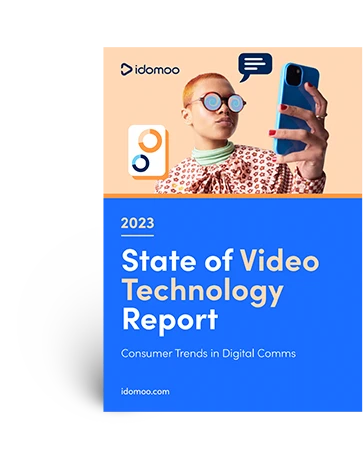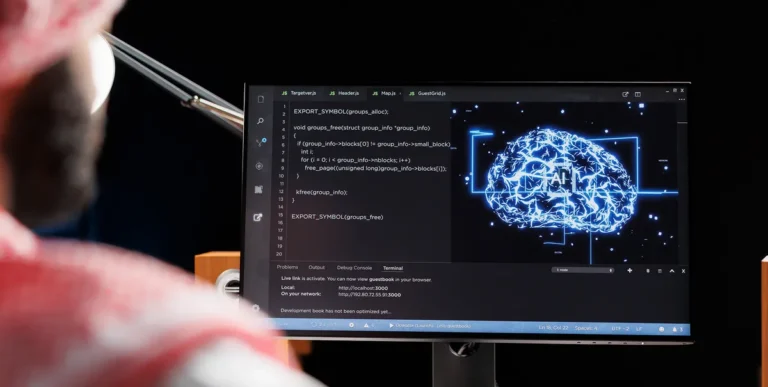Your typical large language model (LLM) gets its information from the internet. Think of ChatGPT. It uses generative AI to create content quickly and effortlessly.
The problem is that sometimes it creates content that isn’t 100% factually correct, aka AI hallucinations. And since it doesn’t cite sources, you can’t always tell what’s bona fide and what’s bogus. This is a real problem if you’re trying to only share information that’s accurate and not, you know, made up out of thin AI air.
Enter stage left, retrieval-augmented generation. Often called RAG, this framework relies on an authoritative knowledge base outside of its training data sources before generating a response.
That authoritative source can be anything. It can even be your company’s knowledge base. Why does this matter for brands? And what should you do about it?
That’s what we’re here to explain today.
How RAG Ensures Accuracy
Retrieval augmented generation, or RAG for short, is an interesting new framework for artificial intelligence that combines the powers of search and language generation.
Basically, RAG systems have a search engine component that can rapidly dig through huge amounts of data to find relevant information. This is like a supercharged version of Google but for specialized data, not just the open web. The key difference is RAG then takes the most useful information retrieved and uses it to generate natural language text summaries — or other content, depending on what you’ve requested and what technology you have hooked up to your LLM. More on this below.
So with this approach it can “read” lots of content and then “write” semantic responses the way a human expert would after doing research on your knowledge base.
The end result is AI that goes beyond regurgitating what’s already in a fixed dataset to dynamically consulting available knowledge from content repositories that you can trust — just like we do!
This means it can answer questions and synthesize info with way more accuracy and nuance. The combo of searching and generating based on those findings is what makes RAG so great for brands. No more made up info. No more AI hallucinations. It gets information from your branded material.
This is also a more efficient process because you can update your knowledge base — which you’re likely doing anyway as your brand evolves — so the AI is pulling from the latest new data store. Typically, LLMs like ChatGPT or Claude 2 get new information during retraining, which is an expensive, lengthy process. But RAG models avoid this with real-time updates from your knowledge base that don’t require retraining the entire model
Demystifying Retrieval-Augmented Generation
Let’s go a little deeper into RAG. If this isn’t your bag of tricks, feel free to skip the next section, but if you’re curious how it works, read on.
RAG systems integrate neural information retrieval, the ultra-efficient searching through massive text collections, with neural text generation, the algorithmic production of human-readable language. The former acts as a high-powered “reading” module, rapidly indexing relevant data from vast knowledge stores. The latter serves as a creative “writing” module, able to eloquently synthesize key information from retrieved passages into coherent narratives.
The tandem architecture circumvents limitations of today’s large language models like OpenAi’s GPT-4 which can’t explicitly access external datasets within their foundation models (though GPT can do RAG when you upload a file for it to reference). RAG systems overcome this by offloading the content ingestion to specialized standalone retrieval modules. This way, generators can concentrate memory on mastering linguistic dexterity.
This technical distinction may seem subtle, but the implications are profound. Conditioning text generation on documents retrieved in real-time from immense corpuses massively expands the reachable information compared to what can be stored internally only. Expert humans routinely consult external sources to make sound decisions — RAG is essentially trying to replicate similar augmented intelligence for AI.
There are some limits to RAG, depending on the context length of the model. GPT-4 has a working memory of around 64,000 words or around 50 pages. Claude 2 has a memory of 200,000 tokens (around 500 pages). This matters for RAG because the more the LLM can read, the better an answer it can give.
Another perk is mitigating harmful model biases that result from finite training datasets. Retrievers tapping into broader content can expose generators to more diverse perspectives for balanced, grounded outputs.
And comprehensive real-time searches enable genuine fact-checking against original sources rather than risking false fabricated claims. Remember the hallucinations we mentioned above.
In effect, RAG moves closer towards “reading to write,” much as humans leverage knowledge acquisition to unlock reasoning and communication superpowers far beyond our biological programming.
How Enterprises Can Leverage RAG for Better AI Content
While still an emerging technique, RAG has already demonstrated immense potential across business functions.
Here are some use cases that can maximize your ROI.
Marketing Content
This just in — your marketing depends on quality content. OK, that’s not news, but it’s still relevant. Indeed, content is king even if the type of content has changed in the world of Instagram Reels and endless TikToks.
Post on
By creating content using RAG, you can generate marketing collateral at an impressive scale, much faster and for a much lower cost than ever before, and it’s already aligned with your brand. This is especially helpful for video, the most in-demand digital content today.
Rather than having to manually script brand-appropriate content or hire agencies, use RAG to automatically generate on-brand scripts and storyboards for promotional videos by searching your company’s data set — that data set can be sales decks, marketing 2-pagers, anything you have in your branded materials.
It would ingest your guidelines, brand voice, product info sheets, FAQs, case studies, and more. Then it can synthesize the most relevant info into creative concepts for videos that communicate your messaging and value prop.
Sync that to a tool that can generate AI videos at scale, and you can rapidly create videos for different audiences and campaigns. Think of:
- animated tutorials about your latest features
- snappy montages of customer reviews
- video ads with interactive CTAs
- timely promos for events or sales
Content for Other Departments
When we think of departments that need content, marketing comes to mind, but plenty of people in your organization talk to important stakeholders. That, my friend, is content.
For example this video below shows what insurance customers should do in case of an accident. How was it made? By dropping a complicated PDF into our AI video generator. And this video was the output.
RAG opens up possibilities for any department to easily produce high-quality AI content, including video, even if they don’t have any content creation, writing or video experience.
- HR: RAG could generate videos that announce new job postings or celebrate employee promotions. The videos could give a warm, human vibe that reflects the company culture.
- Sales: A salesperson might use an AI tool that leverages RAG to create a quick intro email or a video that speaks to that prospect’s individual needs. It takes a few seconds, and then the salesperson has a polished video to capture attention and establish rapport.
- Customer Support: Video is much easier to understand than long complicated text. Imagine if a certain error message is often confusing customers, a support rep could produce and share an explainer video detailing how to resolve the issue. And the rep could just as easily generate a video for every FAQ in the knowledge base or a custom video for individual user queries.
There’s no need for complicated prompt engineering. Just type in what you need, drop in a webpage or document, or train the AI to your own knowledge base. The AI application does the rest.
Research From Company Material
RAG can also help with knowledge-intensive tasks like research, doing the heavy lifting of sifting through the material you’ve provided as the knowledge source. It promises more precise, comprehensive search experiences by generating multi-sentence answers containing aggregated details from related documents.
For example, when investigating historical warranty claim rates for certain products, RAG can instantly compile statistics across archival spreadsheets rather than just listing potentially relevant files.
Such capabilities will expedite research and case investigations for teams in law, consulting, financial analysis, intelligence services, and medical domains where piecing together insights across rich data environments is manual and tedious today.
It can also automate report generation. Consider periodic reporting around financials, operations, regulatory compliance, and more that consume massive hours. RAG offers an appealing path to go beyond static dashboarding towards auto-narratives describing trends, risks, and recommendations customized to stakeholders’ needs.
Synthesizing interpretable stories from vast datasets is human-intensive. RAG can replicate not just numeric calculations but also contextual analyses. Systems can scan historical figures, sales projections, clinical trial data, public filings etc. and structure coherent summaries highlighting major takeaways — an ideal first draft for experts to subsequently refine.
The upside? Greatly accelerating report production for faster insights and lighter skilled labor burdens. Promising avenues span earnings briefings, clinical outcome reports, customer churn predictions, risk detection across operations, and beyond.
Boosting Creative Work
The most ambitious RAG application is augmenting human creativity like ideation, design, strategic planning, and so forth.
As humans, we tend to think creativity is our domain, but see some of the arguably wildly creative work that generative AI has made. Just dropping this dreamscape from Midjourney here as a reference for AI’s creativity.
Yet this is among the hardest capabilities to automate given the nebulous nature of “imagination.” Still, structured external knowledge merged with AI could greatly nourish innovation.
RAG systems can rapidly research adjacent concepts during brainstorming, analyze customer needs data to inspire differentiated product features, or even suggest metaphors based on a marketer’s positioning goals to craft memorable campaigns. Knowledge as inspiration rather than automation is the goal.
Such tools need not target full automation; rather, the vision is similar to integrated development environments (IDEs) with auto-complete coding capabilities programmers rely on today for quicker, higher-quality software creation. The AI is co-creative, not replacing.
Crafting Enterprise RAG Strategy
The pragmatic C-suite might ask: these emerging use cases seem promising, but what concrete steps can we take today to actively prepare? Crafting a proactive rather than passive stance around RAG is key.
First, test. Measure if RAG systems enhance content creation, worker productivity, efficiency savings, and end-user delight. Optimize your content and workflows to see what works for your team. This means you’ll need benchmarks in place to know how you’re improving and clear metrics you’re targeting so you know what success looks like and can optimize going forward.
Second, have a review process in place. Let subject matter experts validate samples of system outputs, flag errors early, and offer feedback for enhancements and fine-tuning. As with any addition to your tech stack, ongoing oversight bolsters safety and addresses blindspots.
Third, secure executive buy-in by calculating return on investment across parameters like time savings, improved accuracy, operational efficiencies, and more against implementation costs. Prepare budget allocations for scaling successes across the enterprise.
Finally, foster an ethos encouraging responsible development and application of AI like RAG. Cultivate training programs helping employees best leverage RAG tools. If you’re using an Enterprise AI Video tool like ours, motivate your team to take advantage of all it offers. Sometimes the concept of AI can be intimidating, but RAG means it’s your material. AI is just doing some of the busy work. You still have the keys to edit, approve and iterate.
And that’s a win for everyone.
The Outlook for Enterprise RAG Dominance
Make no mistake — generative AI is already cementing itself as the next major paradigm shaping technological and business transformation over the coming decade. With language models like GPT-4 at the forefront today, the pressure to keep pace with what’s coming next intensifies. And RAG represents exactly that: what’s next.
The leaders will be those companies moving fastest to assimilate these tools into their processes and build best practices around them.
RAG is no exception. Combining the powers of search and language generation, it enables more versatile, knowledgeable AI models that can change the AI content paradigm. When thoughtfully implemented, RAG can bring transformative capabilities to knowledge work across functions, from your sales team to customer support to marketing, HR and beyond.
Ready to harness the power of retrieval-augmented generation to enhance productivity and efficiency in the emerging era of creative AI? Or maybe you’re just curious about what these advancements might mean for your bottom line.
Either way, get in touch. We’d love to show you how you can use RAG to create video content that’s effortlessly on brand and on message — instantly.





